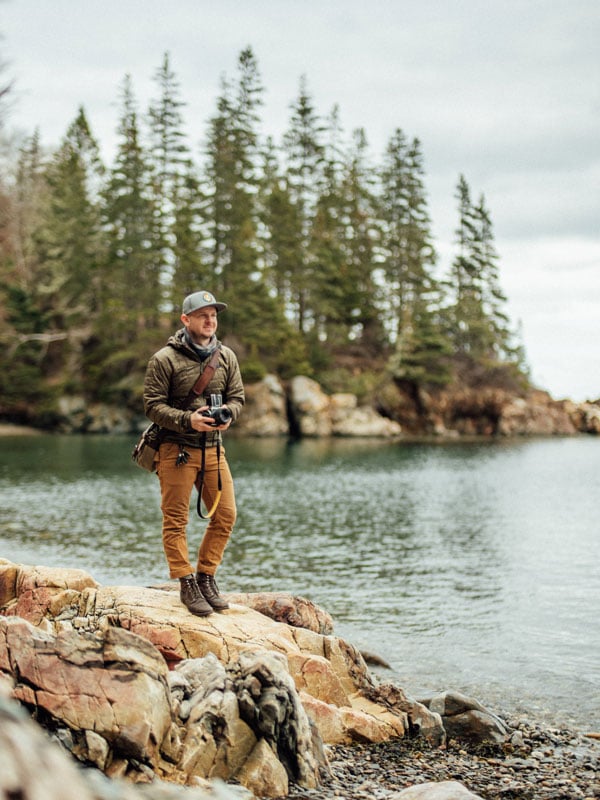Dave Waddell has some 15 years experience professionally photographing everything from breathtaking wild landscapes to gorgeous restaurant plates to idyllic Main Streets to environmental portraits of people at work and play. The staff photographer at Down East and Maine Homes magazines, he lives with his wife and two kids in midcoast Maine, where he spends his downtime paddling Penobscot Bay, skiing the western mountains, and perpetually renewing his love for the people and incredible landscapes of his adopted home state. For Dave, photography is a means for deeper immersion in his surroundings and a way to connect with and learn more about others, their interests and motivations.

We talked with Dave to get more insight into his photography background and some of his favorite spots to shoot.
How long have you been photographing?
I first picked up a camera in a 9th-grade photo class and immediately fell in love. At first, I was really smitten with printing in the darkroom and loading and processing film — that stuff just felt like magic. Eventually, it became more about image creation, playing with exposure and depth of field, following and breaking the rules of composition, and experimenting with different cameras and lenses. Like most kids, I took pictures of the things closest to me throughout high school, which for me was skateboarding, snowboarding, my friends, concerts, and Pennsylvania landscapes. Later, after college, a friend asked if I would shoot their wedding, which was a first for me. I didn’t know it at the time, but this one wedding would eventually lead to leaving my cubicle job and beginning a freelance photography career and crash course in self-employment that taught me most of the skills I use and rely on as a photographer today.
What’s the biggest learning curve for photography?
With the advancement of modern cameras flaunting auto-focus systems that detect and lock onto the eyes of subjects, create realistic fake bokeh, and perform pretty flawlessly in candlelight or moonlight, you can make an argument that the technical creation of a decent, properly exposed and focused photo isn’t that hard anymore. We all know the phones in our pockets are very capable of making high-quality photos, and they do it in a way that’s easier and more accessible to everyone. But I think developing a style or voice to your photography, something that’s unique to you and recognizable as yours, is incredibly difficult. Connecting with and relating to your subjects, whoever/whatever/wherever they may be, in a way that draws them out and communicates something to your viewer and makes them feel something and want to know more — that’s the really hard stuff that takes time and effort, maybe a little introspection, but will always cut through the noise and set your work apart from others’.
We live in such a beautiful state — where are your favorite places to take photos?
I love the mountains but admit that my heart always aches a little whenever I drive away from the coast. Lately, I’ve been enjoying exploring and photographing Penobscot Bay’s countless small, uninhabited islands and a few inhabited ones too, via kayak. Particularly the Muscle Ridge archipelago, the Fox Islands, and Stonington.
What’s been your most memorable photo assignment?
Photographing Rockland’s centenarian lobsterwoman Virgina Oliver and her son Max Oliver on their boat in 2020 is a stand-out memorable assignment. It’s incredibly rewarding and inspiring to spend time with someone who has done something — which could be anything but, in this case, was lobstering — for 90-plus years and be able to see and feel how much they love it and how much it still lights them up, after all that time. And having it all wrapped up in their partnership as mother and son? Not to mention how physically impressive it is? Lobstering is not light and easy work — it’s demanding, and as far as I know, Virginia and Max are still out on the water three days a week in the summer, weather permitting. He’ll be 81 and she’ll turn 103 this year.
Explore Maine with Dave Waddell
These workshops are designed to maximize learning opportunities and provide guidance on creating the kind of images you want to create. There will be individual instruction based on your goals and your questions. Lessons are limited to 5 people per day. Sign up for one of Dave’s photography workshops.











